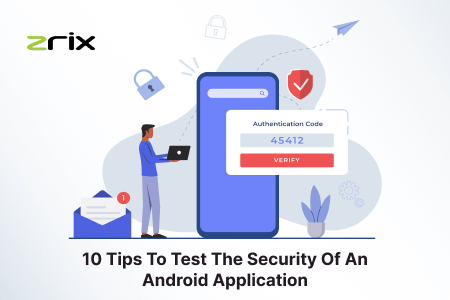More than half of a decade ago, Intel co-founder, Gordon Moore, published a paper predicting the tempo for the digital revolution. Moore’s Law stated that computing competencies would exponentially increase in power over the years while lowering relative cost.
Along with the fantastic deal of work pc engineers and scientists have provided, the law has fueled the speedy increase of the era.
One of the top trends happening in tech today is the Internet of Things, where smart devices connected to a network talk by sending and receiving statistics to execute labor-in depth tasks.
These devices have brought a world of first-rate conveniences in diverse industries for the reason that they dispose of the want for human intervention.
Table of Content
- Mobile Security Strategy: A Road Map Of Future IoT
- IoT Extends IT Security To The Physical World
- Centralize and Secure IoT Devices Access Logs
- Use Network Segmentation
- Establish Secure Password Policies
- Design Privacy and Security Explicitly For Devices
- Use Encryption to Secure Communications
- Conclusion
IoT is not imaginative and prescient of the distant destiny – it has arrived and is developing rapidly. In 2017, the number of related gadgets overtook the global population of 7 billion.
"It is projected to reach 20.4 billion by 2020. This brings the IoT market worth from $157 billion in 2016 to $457 billion over the span of fewer than 15 years."
Ready or not, the IoT wave is already breaking on corporation shores. But what about our smartphone security?
While smart, related gadgets mean increased automation and digitization, additionally they translate into new demanding situations so one can require businesses to shift their technique to protection.
It’s no longer tough to find a connection between mobile app improvement and the destiny of IoT. Technically, your phone and smartwatch already are related gadgets that belong to the Internet of Things.
Of course, mobile app development will become much more concerned while you want software that controls or utilizes reviews from a couple of connected gadgets.
Mobile apps can already be used to set thermostats, view safety cameras, and start vehicles remotely. Many organizations now have related devices that robotically order elements and in-workplace repairs.
IoT’s population keeps growing every year, bringing the cutting-edge range of connected gadgets to extra than 20 billion. This determination is expected to top 50 billion with the aid of 2020.
In the approaching years, there could be massive growth in the IoT development services provider company in USA.
Mobile Security Strategy: A Road Map Of Future IoT
While smartphones are nicely understood within businesses, it has been confirmed that personnel at any time, everywhere can access corporate records as the applications are more productive.
The Internet of Things takes this to the extreme, permitting small, cheaper computers to robotically gather information from the bodily international and, in some cases, take movements into the bodily international as properly.
"Trust is important for any mobile deployment and mobile security strategy!"
A common mechanism for organizing this trust is through the usage of virtual certificates, that can without problems become aware of embedded gadgets both to a cell management platform as well as the networks and employer assets device security and mobile application security.
Also Read: 5 Practical ways in which IoT can help the businesses
While the technology has opened doors to a world of limitless possibilities, it has also posed risks. IoT safety and privacy are both reasons for challenge considering the fact that all devices related to a network involve the use of data points.
It is, therefore, essential that they are secured and guarded against cybercriminals. It means we need to work on mobile device security for IoT development.
IoT Extends IT Security To The Physical World
Another element of IoT that’s one of a kind is that often devices can take movement into the physical world they live in, which includes adjusting temperatures, closing doorways, or other movements.
Enterprises will need to take into account the liability of their devices interacting with the physical world and broaden compensating controls accordingly.
"Already, malware infecting commonplace consumer IoT gadgets have caused a botnet of almost 1/2 1,000,000 endpoints, with hundreds of thousands of devices nonetheless susceptible to assault."
Existing mobile phone security techniques can be extended to put together for the new challenges presented by IoT.
This technique no longer addresses immediate concerns but also can offer a phone security and safety blueprint to protect agencies as they appear to scale IoT adoption inside the destiny.
Here are a few ways to enhance your phone protection by using smartphone security techniques for IoT gadgets:
Centralize and Secure IoT Devices Access Logs
Devices connecting to the community without ITs know-how is one in every of the maximum basic cellular application safety troubles in IoT. IT managers recognize what’s attached to the gadget and the information on who’s logged in.
However, the technique hasn’t been scaled to deal with the large volume of IoT gadgets that go online. This enables hackers to get into unsecured gadgets and launch an attack.
Also Read: 5 Major industries benefitted by IoT
To cope with vulnerabilities, get admission to logs to need to be centralized, and trained security groups are tasked to recognize and assault and alert patterns on IoT endpoints.
With DDoS attacks expected to increase, endpoint protection systems that could discover this form of threat ought to turn out to be established.
Use Network Segmentation
Enterprises need to recognize that IoT gadgets will sit outside the corporate network and then reach into corporate records shops. With unfettered entry to the corporate network, this may pose a serious chance to sensitive systems inside the organization.
Enterprises need to examine precisely which records and application shops IoT gadgets will access and ensure that the network is segmented to prevent IoT gadgets from compromising other systems.
It is one of the pleasant mobile security strategies we are able to deliver to every custom software development company in USA.
Establish Secure Password Policies
Most devices, along with domestic routers, community printers, and sensors, are devoid of robust authentication and get admission to protocols. Unfortunately, the concept of the use of multi-thing authentication is rare in IoT devices, with a few now not even requiring any form of authentication.
Change passwords to sturdy and specific ones that use a mixture of uppercase and lowercase letters, numbers, and, if possible, symbols.
You also can use sign-on (SSO) software to control and restrict access. End-users should be knowledgeable on the nice practices for domestic modems and routers, specifically if gadgets are moved from domestic to workplace networks and vice versa.
Design Privacy and Security Explicitly For Devices
Many IoT tool producers do not recollect incorporating a strong protection feature into the design lifecycle of their products and a few devices may be infected with malware alongside the delivery chain, due to lack of right trying out or quality controls.
These are the reasons why protection and user privateness need improvement within the entire supply chain, which the manufacturers can deal with via designing their merchandise explicitly for privacy and security, specifically when they are offered with an internet provider settlement that locks their customers in for long periods of time.
Use Encryption to Secure Communications
Current encryption practices for mobile safety methods on IoT devices are nonetheless vulnerable and missing in safety, with only some using encrypted communications as a part of their preliminary configuration.
Most use general web protocols that talk on the net through simple text. This is a clean target for hackers who're observing community visitors identify weaknesses.
Also Read: 5 Advances In The Internet Of Things That Will Change Business
Web visitors ought to at the least use HTTPS, DNS safety extensions, Secure file transfer Protocol (SFTP), delivery layer safety (TLS), and other protection protocols for communications across the Internet.
For gadgets that connect with mobile apps or other far-flung gateways, encrypted protocols ought to be in place. This goes identical with statistics stored on flash drives for protection from malware.
Conclusion
The technology is moving at a speedy pace, so it’s excessive time we address those serious concerns with those effective strategies. This will permit quit-customers to utilize their gadgets without stress about their information being compromised.
Security is now of the best priority and manufacturers at the moment are tasked to improve the technology so their devices can provide a safe environment for his or her use.
Many stop customers may need to convey their personal IoT devices, such as wearables, into the company. However, the business enterprise management talents for wearable devices are nascent and thus they may now not be suitable for corporate programs.
If wearables are required to handle touchy information for the organization, groups will need to assess the embedded security features of their packages until broader cell tool safety and management frameworks are developed.
We are the best mobile app development services provider in USA from where you're taking help in anything associated with online business!




